












7
Nonprofit Spotlight
End Slavery Tennessee, provides spaces for healing for people who have experienced human trafficking.















End Slavery Tennessee, provides spaces for healing for people who have experienced human trafficking.


Longtime Contributor Photographer, Alvine, presents photos from 1990 and 2019 Pride Marches.

Joe Nolan says Midsommar might not be the best horror film, but it is the best bad boyfriend revenge movie we’ll see this year.


Our vendors write in this issue about homelessness symposiums, sticking together, West Virginia, cancer, and lessons learned.
Contributor Board
Cathy Jennings, Chair Tom Wills, Bruce Doeg, Demetria Kalodimos, Ann Bourland
Amanda Haggard • Linda Bailey • Alvine
• Tom Wills • Ridley Wills II • Bailey Basham • Aimee Knight • Joe Nolan • Harold B. • Ken J. • David "Clinecasso" C. • Victor C. • Jaime W. • Theresa S.

• Julie B. • Chris W. • Mr. Mysterio • Cynthia P. • Vicky B.





Cathy Jennings • Tom Wills • Joe First
• Andy Shapiro • Michael Reilly • Ann Bourland • Patti George • Linda Miller •
Deborah Narrigan • John Jennings • Barbara Womack • Colleen Kelly • Janet Kerwood • Logan Ebel • Christing Doeg • Laura Birdsall
• Nancy Kirkland • Mary Smith • Andrew Smith • Ellen Fletcher • Anna Katherine Hollingsworth • Michael Chavarria
Will Connelly, Tasha F. Lemley, Steven Samra, and Tom WIlls Contributor Co-Founders
Editorials and features in The Contributor are the perspectives of the authors. Submissions of news, opinion, fiction, art and poetry are welcomed. The Contributor reserves the right to edit any submissions. The Contributor cannot and will not endorse any political candidate. Submissions may be emailed to: editorial@thecontributor.org




Requests to volunteer, donate, or purchase subscriptions can be emailed to: info@thecontributor.org Please email advertising requests to: advertising@thecontributor.org





Mailng Address
The Contributor P.O. Box 332023, Nashville, TN 37203
Editor’s Office: 615.499.6826 Vendor Office: 615.829.6829
Proud Member of:





Printed at:
Follow The Contributor:
Copyright © 2018 The Contributor, Inc. All rights reserved.

 BY TOM WILLS, CO-FOUNDER
BY TOM WILLS, CO-FOUNDER
The paper you just paid for was bought by someone else first, otherwise it wouldn’t exist. That’s how The Contributor works. A vendor who experienced homelessness paid 50 cents for this paper and then sold it to you. By buying it and taking it with you, you’ve just encouraged that vendor to buy another. BOOM! That’s the solution. Now keep reading. This paper has something to say to you.

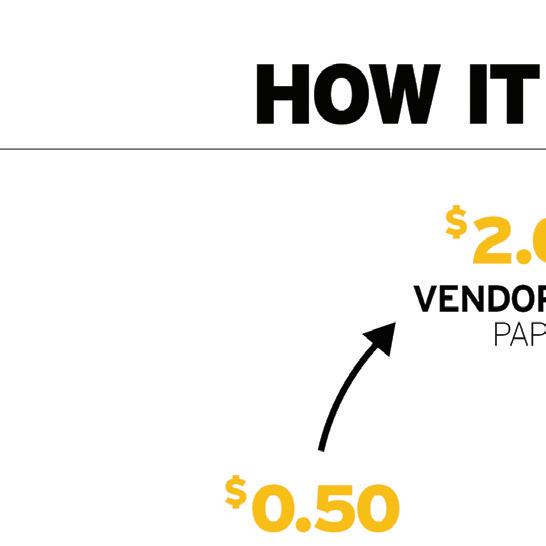
Street papers provide income for the homeless and initiate a conversation about homelessness and poverty. In 2007, The Contributor founders met at the Nashville Public Library downtown to form one. In a strike of lightning we named it The Contributor to infer that our vendors were “contributors to society,” while their customers could contribute to their work. But, thunder from lighting is always delayed …
It took three years, but Nashville embraced us like no other city in the world. The Contributor became the largest selling street paper per-capita on the globe. And today 50 percent of our six months or longer tenured vendors have found housing. BOOM! The thunder has struck.
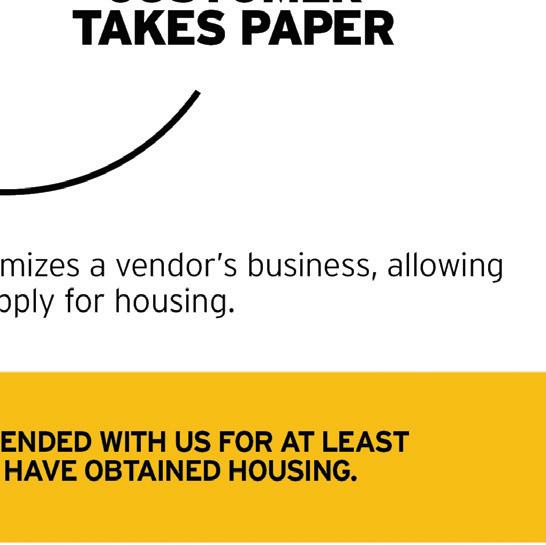
The Contributor is a different kind of nonprofit social enterprise. We don’t serve meals or provide emergency shelter. We don’t hire people in poverty to create products or provide a service. Rather, we sell newspapers to homeless people who work for themselves. We train them to sell those papers to you, keep the money they earn, and buy more when they need to replace their stock.
Our biggest fans don’t always get this. Like lightning without the thunder, they see the humanity of the vendor but misunderstand the model. Case in point: In 2013 during a funding crunch, a representative of one of Nashville’s biggest foundations exclaimed, “I’m such a big fan that I never take the paper!” We responded, “Well, that’s why we are in a funding crunch.” BOOM! Thunder was heard. Taking the paper makes our model work — not taking it breaks it. And selling the paper twice doesn’t just fund the paper, it funds housing and change. BOOM! Our vendors report their sales to qualify for subsidized housing and even for standard housing deposits and mortgages. They don’t consider your buying the paper a “donation.” It is a sale. When they sell out, they buy more and build the paper trail of a profitable business. Until making these sales, many of our vendors had never experienced the satisfaction of seeing their investment pay off. And when it does, it liberates! They have become “contributors” to their own destiny. And Nashville has become a city of lightning and thunder. BOOM! Now that you are a SUPPORTER , become an ADVOCATE or a MULTIPLIER You are already a SUPPORTER because you know that taking the paper makes the model work. You bought the paper and you are reading it. Now your vendor is one copy closer to selling out, which is exciting! Now you can become an ADVOCATE when you introduce your friends to your favorite vendor, follow us and share our content on social media, contact us when you witness a vendor in distress or acting out of character, or explain why others should pick up a copy and always take the paper when they support a vendor. And, you can become a MULTIPLIER when you advocate for us AND directly donate to us or become an advertiser or sponsor of The Contributor. Our income stream is made of 50-cent- at-a-time purchases made from our vendors, matched by contributions, ad sales and sponsorships from multipliers like you. Because our vendors are business owners, your donations are seed-money investments in their businesses and multiply in their pockets. Every donated dollar multiplies four-to-seven times as profits in the pockets of our vendors. Thanks for contributing.
El periódico que usted acaba de pagar fue primeramente comprado por alguien mas, de otra manera no existiría. Así es como funciona The Contributor. Un vendedor que está sin hogar pagó 50 centavos por este periódico y después se lo vendió a usted. Al comprarlo y llevarlo con usted, usted animo a este vendedor a comprar otro. BOOM! Esa es la solución. Ahora continúe leyendo. Este periódico tiene algo que decirle. Los periódicos vendidos en la calle proveen ingresos para las personas sin hogar e inicia una conversación sobre lo que es la falta de vivienda y la pobreza. En el 2007, los fundadores de The Contributor se reunieron en una librería pública en Nashville para formar uno. Y como golpe de un rayo, le llamamos The Contributor para dar a entender que nuestros vendedores eran “contribuidores para la sociedad,” mientras que los consumidores podrían contribuir a su trabajo. Pero, el trueno siempre tarda más que el rayo. Nos llevó tres años, pero Nashville nos acogió como ninguna otra ciudad en el mundo. The Contributor se volvió uno de los periódicos de calle más vendido en el globo. Y hoy el 50 por ciento de nuestros seis meses o más de nuestros vendedores titulares han encontrado casa. BOOM! Ha llegado el trueno.
JENNINGSThe Contributor es una empresa social sin fines de lucro muy diferente. Nosotros no servimos comida or proveemos alojo de emergencia. No contratamos gente en pobreza para crear productos or proveer un servicio. En vez, nosotros vendemos periódicos a las personas sin hogar para que ellos trabajen por ellos mismos. Nosotros los entrenamos como vendedores, ellos se quedan el dinero que se ganan, y ellos pueden comprar más cuando necesiten reabastecer su inventario.
Nuestros mas grandes aficionados no entienden esto. Como un rayo sin trueno, ellos ven la humanidad de el vendedor pero no comprenden el modelo. Un ejemplo: En el 2013 durante un evento de recaudación de fondos, uno de los representantes de una de las fundaciones más grandes de Nashville, exclamó: “Soy un gran aficionado, y es por eso que nunca me llevo el periódico.” Al cual nosotros respondimos: “Y es por esa razón por la cual estamos recaudando fondos.” BOOM! Y se escuchó el trueno! El pagar por el periódico y llevárselo hace que nuestro sistema funcione, el no llevarse el periódico rompe nuestro sistema. Y el vender el papel dos veces no da fondos para el periódico, pero da fondos para casas y causa cambio. BOOM! Nuestros vendedores reportan sus ventas para calificar para alojamiento subvencionado y hasta para una casa regular, depósitos e hipotecas. Ellos no consideran el que usted compre el periódico como una “contribución” pero más lo consideran como una venta.
Cuando se les acaba, ellos compran mas y asi logran establecer un negocio rentable. Hasta que lograron hacer estas ventas, muchos de nuestros vendedores nunca habían experimentado el placer de ver una inversión generar ganancias. Y cuando logran hacer esto, da un sentido de Liberación! Ellos se han vuelto contribuidores de su propio destino, y Nashville la ciudad de el trueno y el rayo. BOOM!
Ahora que te has vuelto nuestro SEGUIDOR, vuelve te en un ABOGADO o un MULTIPLICADOR. Ya eres nuestro SEGUIDOR, porque sabes que al llevarte este periódico sabes que esto hace que nuestro modelo funcione. Compraste el papel y lo estas leyendo. Ahora nuestro vendedor está a una copia más cerca de venderlos todos. Que emoción!
Ahora que te has vuelto nuestro ABOGADO cuando presentes a tus amigos a tu vendedor favorito, siguenos y comparte nuestro contenido en social media, contactanos cuando seas testigo de un vendedor actuando de manera extraña o fuera de carácter. O explicale a tus amigos porque ellos deben de llevarse el periódico cuando ayuden a un vendedor.
Te puedes volver un MULTIPLICADOR cuando abogues por nosotros, Y directamente dones a nosotros o te vuelvas un anunciador o patrocinador de The Contributor. Nuestra fuente de ingresos consiste en ventas de 50 centavos hechas por nuestros vendedores, igualadas por contribuciones, venta de anuncios, y patrocinios de multiplicadores como usted. Porque nuestros vendedores son dueños de negocios, las donaciones que den son dinero que es invertido y multiplicado en sus bolsas. Cada dólar donado se multiplica de cuatro a siete veces en la bolsa de nuestros vendedores. Gracias por Contribuir.

In the issue of The Tennessean that came out June 9, I read that Vanderbilt had a commitment from a quarterback from Weatherford, Texas, to play football for Vanderbilt beginning in the fall of 2020. This reminded me that this young man will not be the first person from Weatherford to attend Vanderbilt. Willis D. Weatherford, the sixth of seven children of Margaret Jane and Samuel Leonard Weatherford, was born in Weatherford, Texas, on Dec. 1, 1875. His parents’ home consisted of two 18’ by 18’ rooms separated by a breezeway twelve feet wide. Mr. Weatherford was a cotton farmer and the brother of the man for whom Weatherford, Texas, was named. When Willis was 7 years old, he entered the fourth grade. Until then, his mother had taught him at home. At age eight, he walked forward at the conclusion of a sermon, and told the Methodist minister he was ready to join the church. Willis had not informed his parents beforehand what he intended to do.
In 1888, the Weatherford family moved to town after Mr. Weatherford swapped his farm for a store and its stock of merchandise. While working for his father as cashier, Willis made the decision to continue his education. Weatherford College,
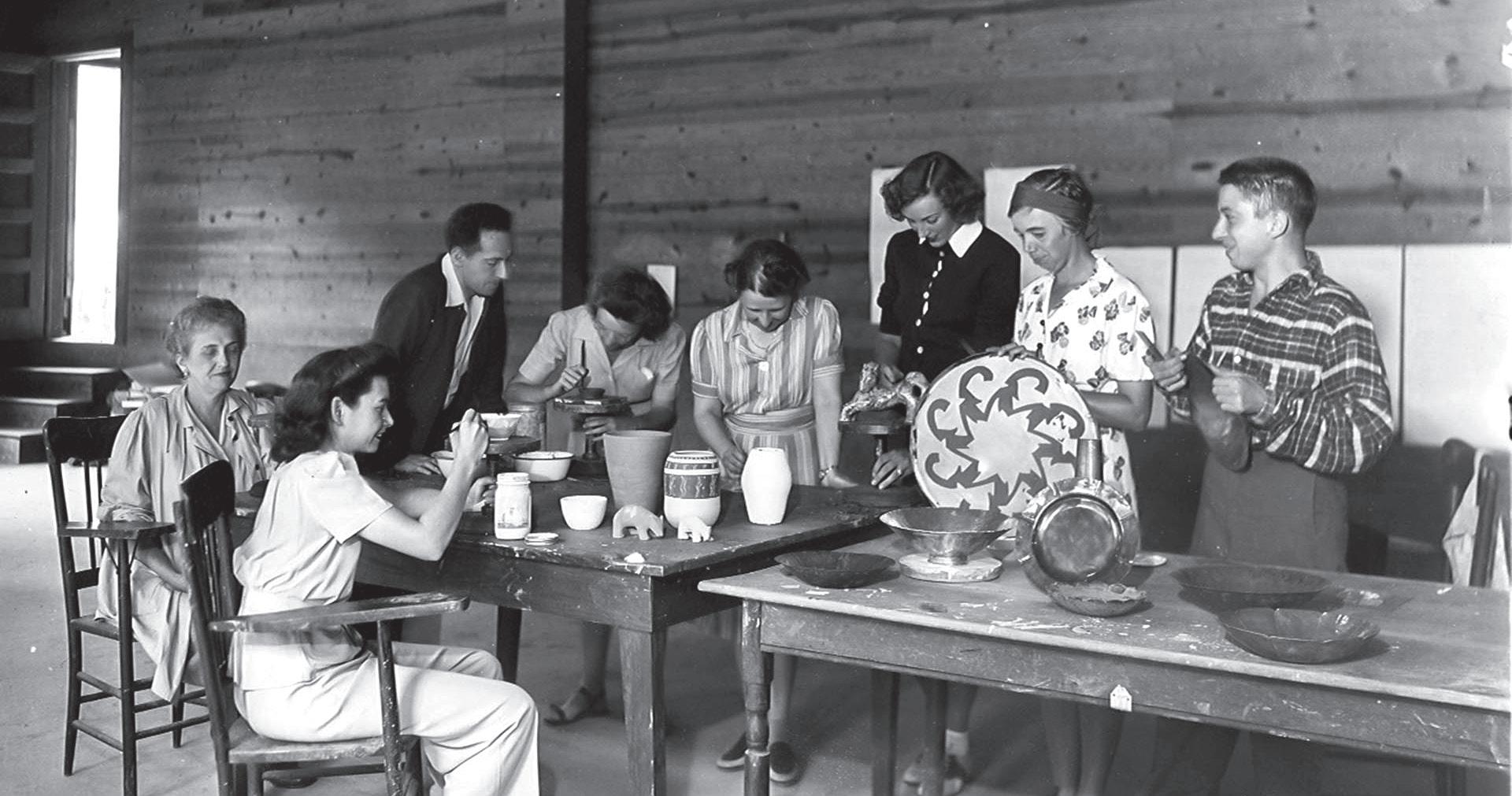
a small local college that awarded B.S. and B.A degrees, was his only option as money was scarce and he could save by living at home and by working part-time. While at Weatherford, Willis joined the student YMCA. After completing his sophomore year, his advisor told him he should study Greek. Willis told his parents and the family gathered on the front porch to consider the matter. His father thought it was not worthwhile. His mother listened and said nothing but later told Willis, “If you want to take Greek, take it.” Willis graduated in 1894 as class valedictorian but with a backlog of debt. He needed to repay that before he could consider attending Vanderbilt, where he was set on going. So, he got a Texas teacher’s certificate and taught at three different schools near Weatherford for three years. In the spring of 1897, he was stricken with typhoid fever. Willis came close to death and suffered a partial loss of his eyesight. This was a huge problem because he needed to study literature, economics and history in the summer in order to enter Vanderbilt the following fall as a junior. Willis got the summer work done only because his mother, who had a very limited education, read the material to him.
Willis achieved his goal of entering Van-
derbilt in the fall of 1897 as a junior. His first year there, the tall, slim and ambitious Texan, who parted his brown hair in the middle and had blue eyes, lived in Wesley Hall, the School of Religion. He paid for his board by tending to the building’s gas lighting system. During his second year, he got a job as an assistant instructor in the gymnasium under physical education professor, Dr. J. T. Gwathmey. His salary there enabled him to move to a rooming house, where room and board cost $25 per month. Weatherford studied Greek, Southern literature and mathematics at Vanderbilt, and won Phi Beta Kappa honors when he graduated in 1899 with a BA degree.
After consulting with Vanderbilt chancellor, Dr. James H. Kirkland, who encouraged him, Willis entered Vanderbilt Graduate School to work toward a PhD in philosophy. Influenced by the famous YMCA secretary Fletcher Brockman, who was a 1891 Phi Beta Kappa graduate of Vanderbilt, Weatherford joined the Vanderbilt YMCA and became that organization’s first graduate student president. Extremely popular with his fellow students, he was also president of the Graduate Club for three years
The first day of Graduate School, Dr. Gwathmey, his gymnasium instructor, told
Willis that he was leaving Vanderbilt for a better-paying job in New York. Gwathmey thought Willis should take his job, so the two men went to see Chancellor Kirkland about the matter. Kirkland agreed and Weatherford was appointed director of the gymnasium. Willis directed physical education at Vanderbilt for all three years he was in graduate school. In those years, all the male students in Vanderbilt, including football and baseball players, had to take physical education so Willis and his two assistants kept busy.
In 1900, the Nashville Athletic Club and the YMCA basketball teams challenged Vanderbilt to games. Until then, basketball had been an intramural affair at Vanderbilt with no coach. With a week’s notice, Vanderbilt, coached by Weatherford, met the YMCA team on the Y court on December 15, 1900. Unaccustomed to the mesh wire backboards, the Commodores lost 22-19. Later that winter, Vanderbilt beat the YMCA team twice, 24-9 and 1412. Weatherford coached the Vanderbilt basketball team for two more seasons.
His 1902 team finished the season with a 5-2 record and outscored its opponents 158 to 125, scoring an average of 23 points per game. Weatherford’s experiences in physical education and coaching a college basketball team had a profound influence on him. He realized that there was a great need for educated men in the physical education field.
In March 1902, just before receiving his PhD, Weatherford received a telegram from John R. Mott, a future head of the International YMCA, asking him not to make a career decision until Mott’s assistant, Hans Anderson, could come to Nashville to talk. Surprised and flattered, Willis waited. In April, Anderson came down and offered Weatherford a position as International YMCA Student Secretary for two hundred colleges in 14 Southern and border states. Weatherford agreed to serve for three years, and a deal was struck.
In 1902, most of the colleges Willis visited were poor and conservative. College presidents saw Darwinism as a threat to their Christian beliefs Weatherford was well prepared, however, to work with young college students. His religious convictions were sound, but he was willing to reach out to embrace new ideas. He also was personable and tireless. He visited 75 colleges a year, including every major university in the South. He started his talks by reading a short passage from a small New Testament that he carried in his pocket. He then launched into his subject without notes or repetition. A student later said, “He covered the South like a Paul Revere.” A dynamic speaker and a wise counselor, he became an intellectual and spiritual leader for hundreds, if not thousands, of students. One of the many influenced by Weatherford was Frank Porter Graham, who would become president of the University of North Carolina, United States Senator and a special mediator to the United Nations. Graham said this about Weatherford: “There were no bounds to Weatherford’s energy and his devotion as he went from state to state and college to college. He had no patience with sloth, complacency, or low standards in religion, personal life, scholarship, athletics, and campus citizenship.”
Because he lived in Nashville, Weatherford helped the Nashville Association when he could. In June 1904, he spoke to 70 members of the Boys’ Hustling Club at the Y. In his inspirational talk, he encouraged the boys to meet “manfully and courageously the afflictions and temptations of life.”
After his first year as YMCA secretary, Willis married Lula Belle Trawick, a small-boned brunette whom he met at Vanderbilt. In 1904, he and Lula moved to live for a summer on a branch of the Swannanoa River in Western North Carolina. When he was a child, Willis’ mother, who was born in Western North Carolina, had told him about her beloved mountains. When Willis attended a Student YMCA conference near Asheville in 1902, he fell in love with the country. At that time, student conferences in the summer were a big part of
the student YMCA movement. As there was no permanent conference center, they met at a different place each summer, once at a hotel.
At a summer conference held at the Asheville School for Boys, John R. Mott was the speaker. Willis told Mott of his dream of establishing a permanent YMCA Summer Conference Center.
Mott encouraged him. Sometime later, a judge in Asheville, knowing of Weatherford’s dream. told him about an ideal site for the conference center.
It was in a mountainous area fifteen miles east of Asheville very close to where Weatherford and Lula Belle had spent their first summer.
In October 1906, Willis and a friend, Dr. A.L. Phillips, of the Presbyterian Sunday School Board in Richmond, visited the site.
In June 1907, Weatherford received a terrible blow. His wife, Lula, died in childbirth. Their baby also died. Weatherford turned to incessant work as a refuge from the chaos and sorrow that followed his beloved wife’s unexpected death, and that of the baby. Continuing to work as Student YMCA secretary and at Blue Ridge, Weatherford also kept in mind the inequities that people of color suffered. In April 1908 he brought seven leaders together in Atlanta-four black leaders and three whites- to discuss the racial situation and consider what they might do to help. John Hope, president of the Negro Atlanta Baptist College, and Dr. W. R. Lambuth, of the Southern Methodist Episcopal Church,
and “that form of isolation that cheats the rural dweller out of his birthright of culture, growth, and enjoyment.”
By this time, everybody in the YMCA world knew about the offer that Chicago tycoon Julius Rosenwald, a Jewish man, had made in 1910 to give $25,000 toward construction of a YMCA for African Americans in any city that would match his gift with $75,000 over a period of five years. In making his offer, Rosenwald said he felt it “the duty of white people of this country, irrespective of their religious beliefs, to meet the needs of their neighbors.” Weatherford, realizing that Rosenwald was on the same page he was on, went to see him. The result was that Rosenwald agreed to finance the project of sending Present Forces in Negro Progress to Southern farm demonstration agents.
In the summer of 1912, the Blue Ridge Assembly opened for its first season of youth conferences. Lee Hall, a white, frame structure with a broad front porch and eight stately columns, each three stories high, was finished and able to accommodate three hundred people. On the front porch, there were rocking chairs where guests could gaze at the mountain peaks across the valley. Weatherford had laid out the road to Lee hall himself. On the first night of that first summer season, Weatherford spoke to the young people in the main reception room. He would continue to do so for years. Weatherford, then only thirty-six years old, was Blue Ridge Assembly’s first president and general director. He was also lonely. Fortunately, he found his second wife at Blue Ridge. Her name was Julia McRory. She was an Alabaman and had been secretary of the student YMCA at Winthrop College. They fell in love and married on May 27, 1914, at the home of the president of Winthrop College. Willis and Julia made their home at 2126 Blair Avenue in Nashville in the winters and in the summers at Blue Ridge.
Pleased with it, they each borrowed $5,000 and bought the 952 acres for $11,500.They signed personal notes for the balance. Weatherford then launched a campaign to raise $50,000 to make the center a reality. The International YMCA in New York sent down a man to help him do something that most of Weatherford’s friends thought impossible.
Defying the enormous challenge, Weatherford ended up raising enough money to buy 1,585 acres of mountain land and began planning to erect a big, white-columned building to be called Lee Hall that he envisioned being the center of what would be named the Blue Ridge Assembly.
were two of the men in attendance. Hope and Lambuth suggested that Weatherford write a book exposing the inequities. A direct result was that Willis researched and wrote a book on race relations, Negro Life in the South , that was published in 1910. It would be the first of five books he would write on race relations. In Negro Life in the South , Weatherford “called for an end to the stereotype of Negroes as shiftless and lazy.” His second book, Present Forces in Negro Progress , dealt Southern farm life and Negroes. In the book, he wrote, “The three arch enemies of Southern Farm Life today are tenant system, the one-crop system,
From 1912 until 1944, some 150,000 young people, many personally selected by Weatherford, came to conferences at the Blue Ridge Center. They all came under the influence of Blue Ridge’s founder and administrator. Theologians, teachers and business leaders came each summer to speak. Blue Ridge was also one of the few places in the South where race relations could be openly discussed. African American leaders, such as Dr. Mordecai Johnson, president of Howard University in Washington, D.C. came to express their viewpoints. It is a wonder that, with such radical talk as went on at Blue Ridge, the Klu Klux Klan did not burn down Lee Hall. One young white woman, who went to Blue Ridge from a town in Mississippi where there were three African Americans for each white person, told her class at Blue Ridge that she didn’t know that Mississippi had a race problem, and said, “Everybody is happy.” Everyone in the room just looked at her and it wasn’t long before she realized how ignorant she was of the town she lived in. Many years later, she said, “Blue Ridge set me free in a way most people would find difficult to understand.”
Buy the next edition of The Contributor to read more about the life of Weatherford.
His religious convictions were sound, but he was willing to reach out to embrace new ideas. He also was personable and tireless. He visited 75 colleges a year, including every major university in the South.
It was 2007 when Margie Quin first began to do work to end human trafficking.
As an assistant special agent in charge at the Tennessee Bureau of Investigation, Quin served as the missing children’s clearinghouse manager and the AMBER Alert coordinator for the state.
“That’s when I learned of Tennessee’s trafficked youth,” said Quin, Chief Executive Officer of End Slavery Tennessee. “By 2010, the TBI had engaged with Vanderbilt to conduct comprehensive research to quantify and qualify trafficking in the state.”
That study, entitled Tennessee Human Sex Trafficking and Its Impact on Children and Youth , reported in 2011 that an estimated 27 million people are enslaved today, and there are 800,000 people trafficked across borders annually.
The research reported that in 2010, the TBI indicted 29 individuals for trafficking girls as young as 12 across the U.S., including in Tennessee, and in July of the same year, an East Tennessee man was arrested for having trafficked
over 400 women.
“Through my work with the TBI, I was inspired to do something more, and working with End Slavery Tennessee is just that — something more,” Quin said.
End Slavery Tennessee is a nonprofit that is focused on providing spaces for healing for those who have experienced human trafficking as well as working toward the eradication of modern-day slavery in Tennessee.

Modern-day slavery is defined as the trade of humans for purposes such as sex slavery and forced labor.
“Modern day slaves are forced into labor, service or sex slavery to make money for their exploiters. The same people who traffic drugs and weapons realize that selling people is more profitable and less risky — but people can be sold repeatedly. In the case of a sex slave, that might be 10, 20 or more times a day,” according to the organization’s website.
Quin said it is the mission of End Slavery Tennessee to provide training and aftercare, as well as to work in advocacy and prevention.
“The work is tough — survivors have experienced so much complex trauma, and it takes time and specialized care for them to heal. We offer that space for a survivor to begin the healing process without the worry of housing, treatment or safe living,” Quin said.
And in order to provide those healing spaces, Quin said the community is needed — whether that be in an official volunteer capacity or just being aware of the red flags to look out for when it comes to trafficking, like signs of abuse, an unexplained and sudden increase in money or possessions or not having a stable home or school life.
“Our organization would not be what it is today if we didn’t have volunteers. We have seven community groups in the area, from Spring Hill to Clarksville, and anyone interested can join to take direct action. The groups meet about once a month to work on things like fundraisers and public education,” Quin said.
For more information and a complete list of red flags to look out for, visit endslaverytn.org.








 BY ALVINE
BY ALVINE

Meet Lily. After losing their apartment, and spending time in a shelter, she and her family are staying on Sesame Street with their friend Sofía (played by actress Jasmine Romero) while they look for housing.
“I love watching Lily,” says Kama Einhorn, senior content manager at Sesame Workshop, who speaks fondly of the “sweet, hopeful, optimistic” young Muppet she helped create.
Based in New York City, Sesame Workshop is the nonprofit organization behind Sesame Street. It strives to educate, entertain and enrich kids tuning into the longest-running children’s show in America. With their program now aired in more than 150 countries, Sesame Workshop runs national and international impact campaigns that complement the stories unfolding on screen.
Since its debut in 1969, Sesame Street has reflected the diversity of urban life. Its human cast features folks from varied cultural backgrounds and people living with disabilities, alongside Jim Henson’s beloved Muppets like Cookie Monster, Elmo, Ernie and Bert. In recent years, Sesame Street – and its many international co-productions – has also welcomed new puppets who are neurodiverse, HIV-positive, and, most recently, experiencing homelessness.
“We knew that homelessness was on the rise,” Einhorn says, citing some heart-breaking statistics. “In the US, 2.5 million children go to sleep without a home of their own. Nearly half are under the age of six.”
Sesame Street has always tackled difficult topics – hands up who remembers Big Bird grieving for Mr. Hooper – and Sesame Workshop goes “wherever vulnerable children and families could most use The Muppets”. Einhorn’s group, US Social Impact, helps kids deal with divorce, incarceration, family violence – anything that could diminish their resilience.
As the rental market gets increasingly competitive, families like Lily’s struggle to find affordable homes.
Family homelessness is still largely unseen by those who don’t experience it.
To many, homelessness means sleeping outdoors, but that’s far too dangerous for families. They may stay at a refuge, in a car, or with relatives and friends, but they’re out of the public eye. These kids become, in Einhorn’s words, “invisible children.”
Sesame noticed a need for materials that explain homelessness to pre-schoolers. “We knew we could present this topic to the youngest children, in this special Sesame way,” she says. “Because of The Muppets, we have a light touch with this heavy topic. We can present information from a child’s perspective, offer them comfort.”
They set about creating videos, articles, activity sheets – even a storybook starring Lily, written by Einhorn herself – to discuss homelessness with children. Now available on the Sesame Street in Communities website, there are resources for kids who have and have not experienced homelessness, all informed by rigorous research – “the lifeblood of Sesame Street,” says Einhorn. A national advisory panel helped inform Lily’s story. “We took everything they told us and we ‘Sesamatized’ it,” she says, referencing that X factor that makes Sesame Street so charming, engaging and enduring. (“H” is also for “Happy birthday!” This year, Sesame Street celebrates a half-century on air.)
The next step was focus-testing. Einhorn’s team took preliminary materials to social workers, teachers and health care professionals for feedback. After all, the resources can help them, too.
Lastly, they spoke to parents with a current or past experience of homelessness. “That was where the really poignant stories and insights worked themselves into the folds of the work,” she says.
The Muppeteer behind — or, rather, below — Lily is Leslie Carrara-Rudolph. What was it like, finally watching her bring Lily to life? “It was completely silent on set,” Einhorn recalls. “There were chills. She was tearful. We watched the character we’d been thinking about and talking about come into existence.
It’s something you don’t forget.”
Lily first trod the boards at 123 Sesame in the 2011 special Growing Hope Against Hunger. Part of Sesame Workshop’s response to America’s malnutrition crisis, it showed Lily experiencing food insecurity – one possible precursor to homelessness.
“If Lily’s parents were struggling with poverty,” says Einhorn, “it was likely that the dominoes might start falling. Shelter would likely be down the row. It was a sadly logical narrative.”
While there’s overlap between poverty and homelessness, the latter is also a specific trauma, with distinct risks and repercussions. Einhorn says homelessness is a “layered trauma,” the first tier being the circumstances that put a family at risk. Next is the ordeal of actually losing the home. Then there’s the distress of homelessness itself, and the related dehumanization.
In Australia, family violence is the primary cause of women and children’s homelessness. Compounded by unaffordable housing, it’s also a key factor in youth homelessness, which has
don’t have homes. When does that recognition become stigma?
“We learned that there’s a continuum of bias development,” says Einhorn. “Part of that is simply how the human brain works. We sort in ‘same’ and ‘different’, by color, shape, size. That’s a go-to cognitive strategy that happens pretty early.”
She says a child as young as three may ask, “Why is that man lying on the ground?” or “Why are that woman’s clothes dirty?” Honest, age-appropriate questions. Adults should give concrete answers – “He doesn’t have a place to live right now” and “People without homes don’t always have a place to shower” – without stigmatising or judgement.
When discussing homelessness with kids who haven’t experienced it, Einhorn suggests waiting for the child to broach the subject. Pay close attention to what they’re thinking and feeling. You might need to ask them a question to find out what they’re really wondering.
“If they’re walking by a person on the street without permanent shelter, [kids] might read adult body-language and cues to be scared,” Einhorn says. If a child is not being compassionate, the adult should counter that directly.
“We never shy away from tough topics with kids. They’re dealing with the same world we are. They need a caring adult to explain things honestly; to feel like they can ask difficult questions.”
So what can kids and adults do to address family homelessness in their communities?
Colvin says, “Be an active citizen. This is a major issue for Australia. Not just for people who are experiencing homelessness, but for people on the cusp of homelessness because they pay so much in rent.” As the national spokesperson for Everybody’s Home — a campaign to fix Australia’s broken housing system — she urges people to demand governments deliver affordable social housing and provide better support for young people struggling at home.
If your child is keen to help, Einhorn recommends donating pocketmoney or clothes. “When we’re cleaning out our homes, make a special effort to consider who’s vulnerable,” she says, adding, “It’s not ‘us’ and ‘them’. Everyone wants to feel safe, happy, healthy and loved.”
After every initiative launches, Sesame Workshop conducts research to measure its reach and impact. “We’ve had some really beautiful stories,” says Einhorn. “They all speak to this idea that The Muppets have a straight line to our hearts — and that’s not just for children. Most adults have their favorite Muppet.” Hers is Grover.
“They have a special power, so it’s not surprising that kids relate to them. That’s why Lily looks more like a human rather than a monster Muppet,” she says. “We really needed kids to see themselves in her.”
increased 26 percent over the past decade. People aged 12 to 24 now account for almost a quarter of all Australians staying in supported accommodation, and a third of those living in severely crowded dwellings.
Kate Colvin, acting CEO at the Council to Homeless Persons, says “it’s very difficult for a young person to rent in the private market, so they’ll end up couch-surfing.” Moving disrupts study and disconnects young people from natural support networks. “That can be really traumatic. Instability has a devastating effect on young people.”
Colvin says adults who experienced homelessness as children are much more likely to be long-term unemployed. This, in turn, catalyzes various physical and mental health issues.
“All trauma creates a public health risk,” says Einhorn. “Homelessness is one of the more complex ones. We talk a lot about ‘help, hope and healing’. Our Sesame stance is about kindness, empathy and compassion – building smarter, stronger, kinder kids.”
Fascinated by children’s worldviews, Sesame Workshop wanted to glean the age at which kids start to notice some people
Real-life children like Lily feel “a profound sense of dislocation and isolation, like this is only happening to them”, says Colvin, moved by the warmth that Sesame Street’s residents extend to their newest neighbour. “If a child feels as though Lily represents them, then that care can be transferred through watching the show. They can feel that people care about them.
“Seeing their situation represented, seeing that other families struggle with these issues, will make a real difference,” Colvin adds. “It helps them make meaning.”
In true Sesame style, Lily’s family surmounts their crisis. “That’s what we hope for every child and adult who comes through trauma,” says Einhorn.
To pay her good fortune forward, Lily gifts Elmo a visual reminder of her survivor’s pride: her rainbow ribbons of — remember the letter of the day? — hope.
Find out more at sesamestreetincommunities.org and everybodyshome.com.au
Courtesy of The Big Issue Australia / INSP.ngo
“TO MANY, HOMELESSNESS MEANS SLEEPING OUTDOORS, BUT THAT’S FAR TOO DANGEROUS FOR FAMILIES.
THEY MAY STAY AT A REFUGE, IN A CAR, OR WITH RELATIVES AND FRIENDS, BUT THEY’RE OUT OF THE PUBLIC EYE. THESE KIDS BECOME, IN EINHORN’S WORDS, 'INVISIBLE CHILDREN.'”
The film Hereditary was scary successful last year. Writer/director Ari Aster’s feature debut delivered an incendiary performance by Toni Collette and a tightening noose of a story that gradually strangled viewers in supernatural sights, occult symbols, real life tragedies and heavy themes about the generational traumas that can ripple though family lines. Hereditary is a work of art that transcends the horror genre, and it belongs in the same conversation as The Shining and The Wicker Man The Wicker Man is the ultimate example of the folk-horror sub genre, and while Hereditary eventually found its way to a pagan place, Ari Aster’s new film is one long fertility rite freak-out, and it’s probably the best bad boyfriend revenge movie we’ll see this year.
Christian (Jack Reynor) and Dani (Florence Pugh) are a young couple on the rocks. Christian is sort of a shiftless jerk who can’t decide what his graduate thesis should be. He's been with Dani for four years and constantly considers breaking up, but he doesn't have the courage to do that. He can’t remember how long they’ve been together and even forgets her birthday.
Christian is a boy-man who won’t commit to decisions because he doesn’t want to face their consequences.
That said, Dani is not an easy person to be with — her family brings sky-high drama, and she’s steadily popping anti-anxiety meds and sleeping pills throughout the film.
Christian should leave Dani in the first act of Midsommar so he and his buddies can
go stag on a secret trip to a summer solstice festival in Sweden. He should be the selfish loafer that he really is and leave Dani and her troubles to their own fates. Instead he chickens-out and passive-aggressively takes his frustrations out on her. He claims to apol-

ogize but doesn’t say sorry and he gaslights her until she’s the one apologizing to him. Dani joins Christian and the guys on their trip to the communal Swedish farm where their friend Pelle (Vilhelm Blomgren) grew up.
Midsommar’s greatest strength is its ravishing visuals. Cinematographer Pawel Pogorzelski points his camera at a frozen Swedish forest in the throes of a howling twilit blizzard in the film’s first frames. The shot gives us foreboding trees, ominous winds and announces the central trope of folk horror: the isolated landscape. It’s a great opening, but this is a movie that takes place in Sweden over the summer solstice when there are only a few hours of darkness at night.
One of Midsommar ’s gimmicks is that it’s a horror movie taking place in broad daylight and the beauty of the Swedish countryside, the colorful designs decorating the farm buildings, and the embroidered robes and masks worn by the revelers positively sparkle in all that mountain majesty. Add to these colorful sights throbbing and shimmering psychedelic hallucination effects and a totally disorienting upside down camera shot that announces the group’s arrival at the festival and there is plenty to trip out on here.
Unfortunately, Midsommar disappoints in fundamentals like story and characters. Aster’s characters are exactly the “smart ass,” “nerd,” “jerk,” personas we find in the most cliché horror films where we know all those city kids are going to go into the countryside to die. Aster could have set the audience up with those expectations, but that would result in shock or surprise or some other experience that you won’t find here. Midsommar is a new skin for an old ceremony. It dresses up like a folk horror classic, but it’s better enjoyed as a simple, predictable female revenge film that hinges on a combustible third act performance from Pugh.

‘MIDSOMMAR’ IS SCARY AND GOOD, BUT IT’S NOT SCARY-GOOD
A favorite story of mine is, The Emperor‘s New Clothes. The story is told in many languages and contexts, but the basic story is as follows. There is an emperor that is quite impressed by himself. The emperor demands the highest quality of clothes, and yet, is never satisfied with his tailors. Thus, the tailors “dress” the emperor with invisible clothes that only the most distinguished persons can see. The emperor is pleased.
The story is always a challenge to me as a leader of a faith-based non-profit that “meets human needs in Jesus Name, without discrimination.” The challenge comes during the continuous long meetings of how to serve the poor most effectively, reduce homelessness, increase social mobility for children, and meet the expectation of funders. Many of these conversations talk about fabrics, colors, frameworks, policies, processes and minimum improvements. We discuss the current problems that are newsworthy, but rarely discuss the upstream cause of those problems.
Upstream from the problems are the social determinants of well-being. Simply, issues of transportation, income, food security, housing security, environment, access to healthcare and community connections are all pivotal to reducing poverty and community displacement (homelessness). Each of these issues is discussed within our community, but for some reason, the language and tone change when
discussed for the poor, extremely poor, and the biased other.
The community, the collective social sector specifically, has a natural tendency to become the central figure in the stories of service, the “emperor” if you will. We become the hero and the villain. We protect what we do because we try really hard. We even blame each other. We protect what we have because we deserve it. The poor should be thankful because we give them as much as we can, as often as we can. This attitude and process create a QUALITY CHASM.
As the healthcare industry has experienced over the past 20 years, it is the client, patient, beneficiary, "Self" at the center that allows for the greatest effect. Have you noticed the competitive change in healthcare? It is seen in the ER time displays. Imagine if shelter services competed with signs signaling beds available, time to enter, free breakfast with stay, and expected time to increased income and housing. Now, this would be a public commitment to quality services with the “Self” at the center. I contend that it would increase the effectiveness of every shelter and supportive housing service, reduce costs, reduce persons on the street, and reduce suffering. Concentrating on the individual “Self” over any single organization or collective will reduce the quality chasm.
Thus, I have challenged The Salvation
Army over the last 18 months. Might we:
• Reduce dependency and entitlement?
• Reduce placating the social entrapments of poverty?
• Reduce the days of homelessness that we cause?
• Reduce other concerning maladaptive (poverty inducing) behavior?
I extend this challenge to our community. Might we share a radical vision of love for the individual by providing;
• Individual or "self" centered approaches to great customer service
• Reduce biased poverty language of rules and regulations by increasing a community language of roles and responsibilities.
• Celebrate the vast number of lives changed through our community efforts in order to recognize the strengths of success.
• Reduce the polarization of blame through community building.
My favorite part of the story of the emperor is the little boy who sees the emperor in the parade and yells “the emperor is naked.” The people who lived in fear celebrated the façade of invisible clothes. The child spoke
the obvious and the emperor became aware.
While families sleep in cars, While women find late night connections, While men hide under bridges, While couples prefer tents to the process of housing, While panhandling pays more than jobs, While aged racism and bias extend contempt,
While hunger is a fault issue, While better is good enough, While we blame our socially displaced neighbors,
Let us be cautious as we parade through town in our best clothes. For it may be a child sleeping in a car in Nashville that calls us out.
Major Ethan Frizzell serves as the Area Commander of The Salvation Army. The Salvation Army has been serving in Middle TN since 1890. A graduate of Harvard Kennedy School, his focus is the syzygy of the community culture, the systems of service, and the lived experience of our neighbors. He uses creative abrasion to rub people just the wrong way so that an offense may cause interaction and then together we can create behaviorally designed solutions to nudge progress. Simply, negotiating the future for progress that he defines as Quality of Life in Jesus!
I think a few comments on the [voter registration law] article by Amanda Haggard are in order. Tennessee is not the only state with penalties for submitting fraudulent voter registration forms. Approximately 25 other states have penalties on the books for submitting fraudulent voter registration forms and intentionally creating duplicate forms.
According to Tennessee State senator Ed Jackson, a sponsor of the new voter registration law, it was not just 10,000 faulty forms but closer to 100,000 faulty forms submitted and many were intentionally done. Shelby and Davidson
counties were the counties with the most fraudulent forms. Many were submitted last minute and the counties had to spend around $250,000 extra taxpayer dollars to process them.
Claiming voter suppression is ridiculous and is politically motivated. This law is just a matter of ensuring fair elections. There is absolutely no reason for anyone to submit these types of errors in these numbers unless they are trying to play the system. These forms contained incomplete addresses, missing signatures and missing social security numbers and a large number were duplicates. If the
people conducting the voter registration drives act responsibly and get the forms filled out correctly there will be no fine to pay. This is just basic common sense. JOSEPH CAUTHREN
efforts to offer feminine hygiene products, and the call for a Safe Parking Program. Thanks for continuing to publish this outstanding paper. DEBORAH NARRIGAN
I've just read [an earlier edition of The Contributor ]. Bravo for an outstanding issue. The three main articles — "On menstruation", "Path to Public Housing" and "Vehicular Homelessness" were all very well written and offered excellent information, from mapping the convoluted process toward housing, the creative community-based
I’m contacting you in regards to a donation I’d like to make. I was approached by a very kind man who worked for The Contributor one evening in front of HQ near Broadway. I do not normally give money to strangers, but I gave him my word that I would look into the organization. I now realize what amazing things you guys are all working on together. DEREK
SHERMANIt’s that time again out the door plenty of work and what’s more.
Took off my shoes remembered the miles woke up this morning all smiles.
BY DAVID "CLINECASSO" C ,FORMERLY HOMELESS VENDOR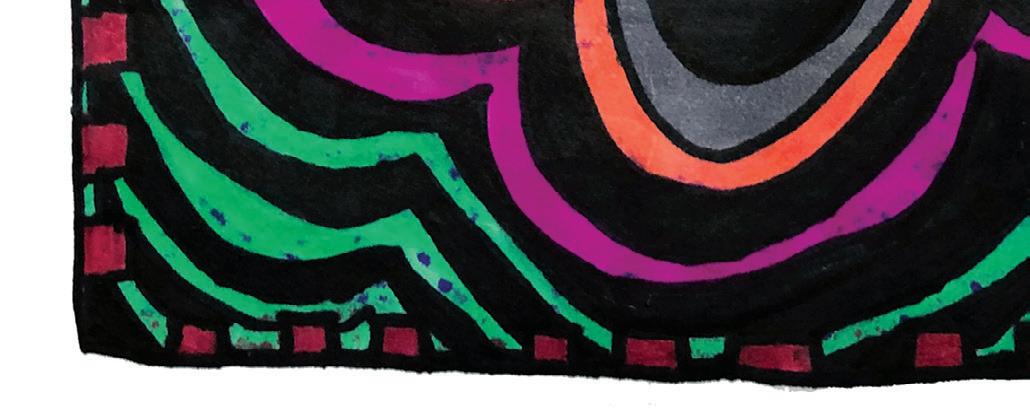
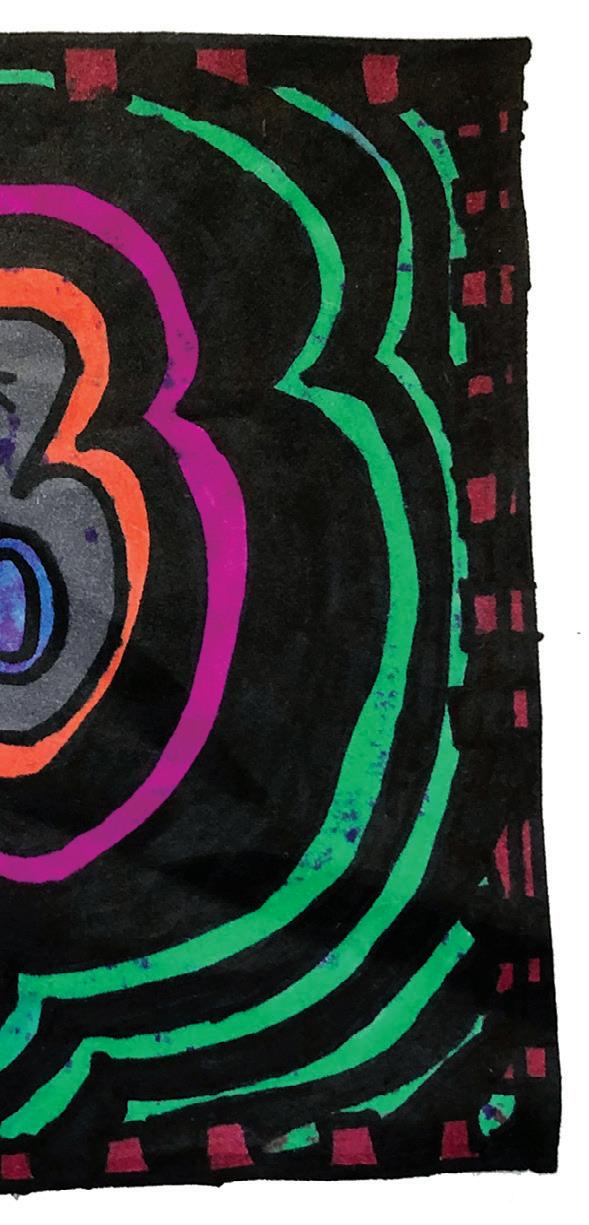

KEN
I said goodbye a thousand times still you stay with me reminders of the way I used to be through all these times and all these miles you convince, you’re mine the dedication to a man in need of redemption to solidify this life of ours I’ll never have to search never have to reach cause I know you’re always by my side
Never forget where you came from Never forget where you’re going Never forget how you got there Never forget who helped you.
I always love going to the CMA Festival. I almost did not go this year, but I’m so glad I did. Even though I can’t afford the whole four-day package, I always get the tickets to the Fan Fair X Hall at the Music City Center.
I had to wait an hour and a half to meet Randy Travis. He could not talk or sign autographs because he recently had a stroke. When I fi nally made it up to him, I told him, “Randy Travis, it is an honor to meet you.” And he nodded his head, “yes” like he knew what I was saying.

Then I waited two and a half hours in line to meet Crystal Gayle. And when there were only a few people ahead of me, right before I got up there, my husband called and asked me if Crystal Gayle had any knock out,
drag outs with her sister Loretta Lynn when they were kids. I told him, “I’m not gonna ask her that!” I fi nally made it up to her and I told her, “Crystal Gayle, it is an honor to meet you.” And she went on and on about how she liked my shirt and how she loved my autograph book.
It was a great time and I love going to it even though I can’t afford the whole package. I had a blast, and if I ever got to meet Tanya Tucker I think I would have a heart attack. I love country music and I’m a huge fan of Tanya Tucker and I would be tickled to death if I ever got to meet her. I love all of her music. There’s not a Tanya Tucker CD I don’t have. If it’s not country or rock or gospel, I don’t listen to it. I love music. Always wanted to be a country singer.
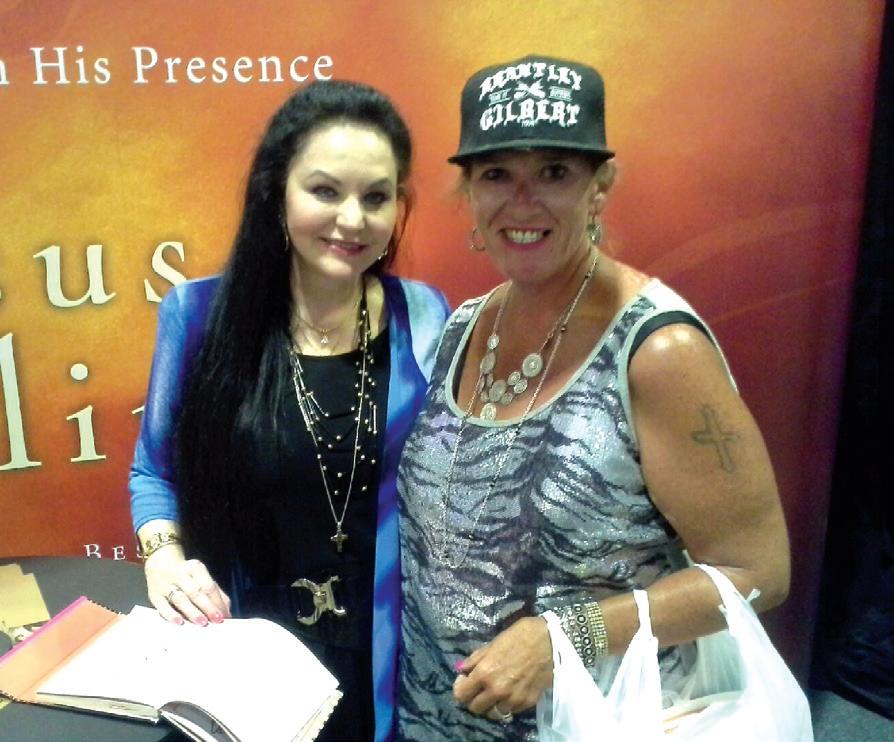
Being a homeless woman in Nashville has taught me so many life lessons through others. Many times we are too caught up in our own problems to realize that there are other people with much worse problems. While homeless, I worked on my life’s pursuits preparing to become an activist on behalf of poor children. I became homeless in 2012. The real reason I found myself in this predicament was because I was trying to become an activist and start a business at the same time. This endeavor failed because my overall vision was not clear. In a short time I found myself evicted. This was not my first experience at hard times. I was blessed
to learn from most of my experiences and develop support systems for times of trouble.
During my homeless journey I became a newspaper vendor for The Contributor That was one of the best steps I ever took in my adult life. This allowed me to work on myself deeply. One day I talked to fellow vendor named Donna Sattler. She and I were purchasing papers at The Contributor. I had seen her around for awhile. She seemed nice and that’s about it. I left the office and got up to the bus stop just in time. The bus was approaching and I noticed that Donna was sitting on the ground so I reached out
my hand to help her up. I joked, “Us middle aged women have to stick together!” We both laughed. When we were on the bus she kept thanking me. At least three times. I told her she did not have to keep thanking me. She said, “You don’t understand. No one has ever just offered to help like that.” I was stunned. That statement made me think about what other people go through. In 2018 Donna Sattler died. I never took the time to hear her story. This made me feel very sad. It was an eye opener that she did not experience the basic human kindness that a lot of us take for granted. I will be forever saddened
because I never got to encourage her. The whole experience taught me to be grateful. I never had to sleep, shower and eat outside. I knew how to build relationships on jobs and get help from neighbors. However, life can throw you a curveball. This cocoon of support unfortunately allowed me to develop an attitude of indifference towards my fellow homeless folk. I felt that a lot of them just didn’t want to do any better. I never considered the toll that mental illness, substance abuse, and incarceration could take on a person’s life. To experience human kindness is to experience GOD.
I became homeless when my landlord and his manager kicked me out on the street. They knew I have cancer and still kicked me out on the street — didn’t care what happened to me. It makes me think of the movie, The Grinch That Stole Christmas because the Grinch didn’t have a heart and that’s the way it is with landlords. They don’t have a heart. They don’t care who they hurt and how they hurt them.
How can someone kick someone with cancer and a brain tumor out on the
streets? I try to deal with it the only way I know how—bottle it up and not deal with it. Because no one really cares about me or homeless people. I think it is fear. I think it is that people are afraid of homeless people and people like me. Sometimes I want to sit down and cry because no one really cares. I could die and no one would miss me. You find out who your friends are very quickly. People that you know say that they feel sorry for you, but do they help you? No. Do they say can I help you
find a place to live? No. Do they say come and stay with me? No. And you want to know why? Because they’re really not your friends in the first place. See, someone that really cares about you would help you.
So, living on the street with cancer and a brain tumor, it is hard. You get no sleep you don’t know where you’re going to get your next meal or if you’re going to eat at all. And then there’s where are you going to go to the bathroom? But the sad thing is that people put down homeless people or
even say bad things about homeless people, but do they help homeless people? No. People say homeless people should go to jail? Well, you know there wouldn’t be any homelessness if you’d make more housing for the homeless and people like me that need a home. But people don’t care so they don’t help homeless people because they don’t care about homeless people.
P. S. Send your questions in to the paper so I can answer them: editorial@thecontributor.org
When people found out I moved here from West Virginia they always start with the, “Hey, have you heard about the hillbilly that walked into a…” joke. The thing is they’re rarely good. Only real West Virginians can tell a really good W.V. joke. Don’t look at me
— I’m a transplant from a few miles above the Mason-Dixon line. Close, but no cigar. A real West Virginian will ask you if the jokes are true, how come there isn’t more dentists there? They would be getting rich! And, no, when you buy a new truck, it doesn’t come with
roadkill already in the bed — you have to put it there. And, yes, you can buy a new truck in West Virginia and beautiful homes for a fraction of the price here in Nashville. As for the ugly women, Jennifer Garner is from there. Ugly is not a term I would use. Also so is Kathy Mattea, Brad Paisley, Steve Harvey, Don Knotts, Chuck Yeager, Michael W. Smith, Joyce DeWitt, Bob Denver and more. That’s a small list of people who were born there, or who moved to the Mountain State.
In 1861, West Virginia became a state during the Wheeling Convention where
they decided to brake off from Virginia because of the slavery issue and they joined the Union army. But, there was still a lot of men who fought for the confederacy, but that happened all the way up through New England.
In the 1790s, people from what is now West Virginia came up to fight in the Whiskey Rebellion in Washington County Pennsylvania, which was a fight over what they thought was unfair taxes. Today, the West Virginia state motto is, “montani semper liberi,” or “Mountaineers are always free.”
Hey, Gemini, we should go check out that new place by the park that does buildyour-own ravioli soft-tacos. I’ve heard they’re great! It’s already got 331 reviews on Forager and averages 4.5 stars. I’ll just skim through these...5 Stars,....4 Stars, ….5 Stars,...oh no, just 1 Star! Maybe we shouldn’t go. Wait, Gemini, maybe we shouldn’t let one negative comment spoil all these good reviews. Come to think of it, maybe you shouldn’t give so much weight to that one negative comment you got either. We can talk about it over some enchiladas alfredo.
Orpheus was a mythic greek hero whose music could make the rivers dance and the trees sing along. His songs changed the hearts of gods and his lyrics lived on for millennia. But he didn’t get there on his own. His mother was Calliope a goddess and the muse of poetry. His father was a king. He was given a lot to start with and he used it to great purposes. What were you given, Cancer? What could you use it for?
There’s a man with a hammer banging on the staircase outside my apartment door. Oh wait, make that two men with hammers. Or, I guess, a man with two hammers talking to himself. Nope, it sounds like somebody else just showed up with a handsaw. Now they’ve got a belt sander! How am I supposed to get any work done with all this work getting done outside my door? I guess I’ll do it the same way you will, Leo. With focus, tenacity and noise cancelling headphones.
Wow, that little window A/C unit is working so hard! What a good little A/C unit! Listen to that strong and steady buzzing and whirring! Just like the big ones at the grocery store! (I’m sorry you walked in on this, Virgo. I was told that saying encouraging things to my plants would make them grow, and I’m hoping the same will be true for my old window unit. Results are inconclusive. I do think, however, that you might find your relationships will strengthen if you find ways to verbalize your positive feelings about them.) What cold, cold air you have! It’s like a refrigerator in here!
Satori Kato was a Japanese chemist who invented and patented a formula for instant coffee in Chicago in 1901.
His coffee powder was soluble in hot water and quite tasty (if you added enough milk and sugar). The only problem was that David Strang of Invercargill, New Zealand had invented the same process two years earlier. Great minds think alike, Libra. Some great minds just think faster than others. Somebody in New Zealand may have beat you to the punch this time. Just have another cup of instant coffee and keep churning out those great ideas.
When I was a kid, I loved fantasy movies. Weird old worlds with dancing goblins and secret crystal prophecies and dragons you could ride. Sometimes I see those same movies now and I think, “how cheesy!” or, “these special effects are terrible!” But I have to stop. I have to remember what it felt like. It’s hard to enjoy art if you can’t suspend your disbelief. Live in that world for a moment. Forget what you know about the world as it is. It’s the same with hope, Scorpio. You have to let go of the fear and the cynicism if you’re going to push forward toward the world you want.
Sometimes I got bullied as a kid. I was round and sensitive and slow at sports. I found ways to make people like me. I was sturdy and smart and fast with joke. But the easiest way to keep people from making fun of me was to make fun of somebody else. It’s the lowest hanging fruit when you’re dodging judgment. Just point out somebody else’s flaws. It’s also a pretty harmful response. It cost me some friends. It taught me a little bit about empathy. And it’s what I’ve got for you this week, Sagittarius. When the easiest thing is to poke fun, it’s probably time to slow down and take a step toward the person you’re tempted to shame. Don’t throw up a wall. Get closer.
They say self-control is a virtue, Capricorn. In many ways, I agree. Being able to think before you speak and weigh the outcomes before you act is a valuable human trait. But I’m starting to think self-control can go too far. I mean, there are things happening in the world that require immediate action and rapid attention. But here we are. Controlling ourselves. Thinking. Deciding. Weighing the outcomes. Maybe set that aside today. Maybe act and then see what happens. Maybe speak and see what the rest of us say back.
I guess you could say I’m in training, Aquarius. The Public Association of Semi-Trained Amateur Astrologers (PASTAA) is having a conference next month and I think I’m going to sign up for their Competitive Speed Astrology Event. I’ve never thought of myself as a speed-astrologer, but I am getting faster. And, even if I don’t qualify, just the process of training will make me better at my job. What could you sign up for that would make you stretch yourself, Aquarius? How could you challenge yourself to be better? Put a deadline on it and get going! (I wrote this in just eight minutes! That’s only six minutes short of a qualifying horoscope!)
You’ve got a lot of thoughts, Pisces. You’ve got a lot of feelings, too. You’ve got sensations and reactions. You’ve got emotions and ideas. But as all these go passing by, try to realize that there is a “you” behind all of that. The “you” that has the thoughts. The “you” that has the feelings. Have a quiet seat and let that “you” come to the front of the line. Push the rest away. Sit with it. Maybe for five minutes. Maybe do it again tomorrow.
When I was a kid, I would cry everytime the ending credits of Sesame Street started to play. I’m not sure why. Was it the song? The big muppety dog running into the distance? The very idea that all things end? My mother would hear me wailing and she’d run in to turn off the TV in an effort to comfort me. Maybe that’s why I never figured out what made me so sad. I never got to the end of the song. I never found the end of the sadness. Sometimes we just need comfort, Aries. But sometimes we need to cry until we find out what all this sadness was about in the first place.
I don’t know much about dancing, Taurus. Honestly, it terrifies me. The idea of my body trying and failing while other people notice that I’m in the room at all is just a little too much for me. Somebody suggested that I start with the two-step. I do like checklists. And that sounds like about as many steps as I could handle. Maybe I’ll give it a go. What are you afraid of doing, Taurus? What if you could boil it down to just two steps? Could you do step one today?
Mr. Mysterio is not a licensed astrologer, a patented inventor, or a certified air conditioning coach . Mr. Mysterio is, however, a budding intermediate podcaster! Check out The Mr. Mysterio Podcast. Season 2 is now playing at mrmysterio.com










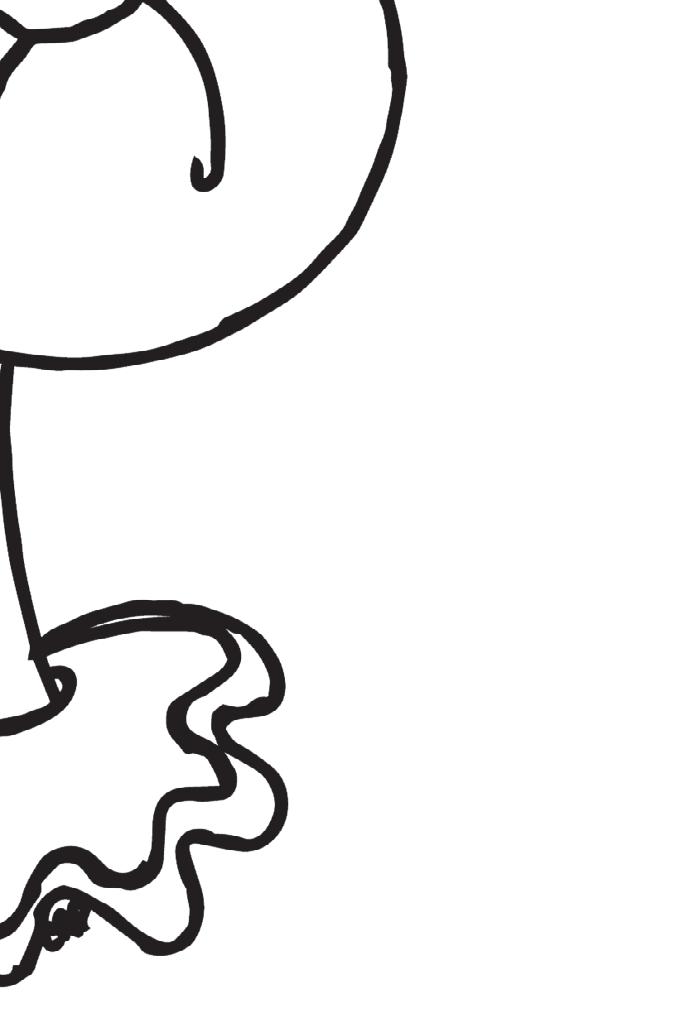


 B Y VICKY B., CONTRIBUTOR VENDOR
B Y VICKY B., CONTRIBUTOR VENDOR
On June 20, a symposium was held at Tennessee State University in Nashville discussing the advances Nashville has made in the fight against homelessness. Several keynote speakers talked about their organizations’ advances in specific areas in the fight against homelessness and where they need help. It was a morning of coming together and working on the very core of homelessness and not putting all our eggs in the, how-did-they-become-homeless basket.
Mayor David Briley spoke briefly in a seemingly unprepared, flipping-through-pages manner, praising the recent PIT Count (point in time count to count homeless people), which showed a 14 percent decrease. Yet many flaws in the count have already been shown. So instead of a decrease, many people think it’s actually more of an increase because homeless people are being shoved out of the city and into the surrounding areas. Mayor Briley also plugged his Under One Roof 2029 plan, which many people are talking about in Nashville, but what happens to people experiencing homeless until the plan is carried out over the next 10 years? So many unanswered questions he has yet to address. All in all, Mayor Briley gave a short and non-passionate message.
Dr. Joe Savage, Regional Director of the U.S. Interagency Council on Homelessness, hosted a presentation called “Home Together.” It was a simple, straightforward approach to reducing the numbers of people experiencing homelessness, but still missed the answer to homelessness: affordable housing. Instead, he explained that Nashville can obtain more federal funds if we do things the government’s way.
“Achieving these shared goals is not possible through federal action alone— it requires strategic focus, effort, and investments from both the public and the private sectors and across all levels of government,” the plan states.

I think we’re all finally on the same
page, but everyone — from Federal, State, County, nonprofit, and the private sector — needs to do their part. It takes a village. He adds that, “prevention of homelessness is the only true way to effectively end homelessness… The 2010 plan “Open Doors” made more affordable housing, more collaboration of agencies working together for a common goal and a rare brief one time experience of homelessness is the only true way to end homelessness.”
The current “Home Together” plan gives much of the same emphasis on the core issues with all homelessness but adds to it racial disparity as a leading cause for the homelessness of people of color.

“Building on what works and discarding what doesn’t, working with those with lived experiences for feedback and increasing affordable housing, more prevention programs and diversion is working. We need to do better in making homelessness a one-time, brief occurrence.”
High level objectives are ensuring homelessness is rare and a one-time occurrence and to strengthen homelessness prevention. Judith Tackett, Director of the Metro Homeless Impact Division in Nashville, spoke about implementing new services for those in targeted areas, improving data collection and navigation, sharing information with other local organizations, and
learning from those with lived experience.
The breakout sessions about affordable housing, supportive services and domestic violence gave more of an opportunity to share ideas. Cathy Jennings, executive director of The Contributor attended the support services breakout session and said, “Centerstone, Family Empowerment Center and Park Center explained the services they offered, how to refer the homeless and how many people they had helping. This year is much better than last year, and I hope that as nonprofits share information about marginalized citizens in Nashville, it will become more streamlined for people to get the help they need faster. It’s difficult and expensive to stand in line all day when you have to work or eat at night or to take the bus to three different places to get basic needs.”
Matt Wiltshire with MDHA recommended rapid changes in rezoning laws, affordability, and talking with council members. The upcoming election will speak volumes about the future of homelessness in Nashville and our surrounding communities. What I wonder is just how much time do we have? How many more will die waiting for housing on the streets of Nashville?
This attendee left with a renewed feeling of hope and encouragement for the future of homelessness, but realizes that much more is needed to make it a success. New laws protecting renters are long overdue. Our housing navigation needs to have case managers out there helping those in the homeless community and those entering eviction to make this a success. Nonprofits make more of an impact on the homeless sector, but often lack in funding and volunteers to carry out their mission statements. No more cookie cutter programs that don’t really help people, and easier access to the programs that do. Advocates and the private sector need to be more involved instead of resting it on just a few heads. The question, “How can I help?” needs to be asked more and followed through on.







